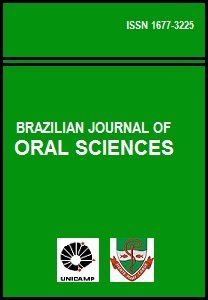Abstract
Aim: To measure torque angle values of brackets designed for canines, comparing it to their prescription values. Methods: One hundred and sixty maxillary (-2o ) and mandibular (-11o ) canine brackets of Roth prescription from the following brands were selected: Abzil, Eurodonto, Morelli and Ormco. The brackets were set in wax and images were obtained by scanning. Reference points were determined over these images, lines drawn and the torque angle was measured. The Student’s t-test and the Wilcoxon signed-rank test were used at a significance level of 5%. Results: For maxillary canine brackets, the medium torque angle values were: Abzil - 0.93o (± 0.88o ); Eurodonto 0.13o (± 0.34o ); Morelli -2.56o (± 0.50o ), and Ormco -1.16o (± 1.27o ). For mandibular canine brackets, the values were: Abzil -11.76o (± 0.40o ); Eurodonto -10.40o (± 0.25o ); Morelli -11.18o (± 0.56o ), and Ormco -11.36o (± 0.30o ). For maxillary canine brackets, the brands Abzil, Morelli, and Ormco presented statistically diferente values from those indicated for prescription. For mandibular canine brackets, the brands Abzil, Eurodonto, and Ormco presented statistically different values from the prescribed ones. Conclusions: Some marketed brands present differences between the torque angle found in the brackets and those recommended in the prescription. However, these differences are clinically acceptable.
This work is licensed under a Creative Commons Attribution 4.0 International License.
Copyright (c) 2015 Anelisa dos Anjos, Daniela Daufenback Pompeo, Gilson José Enricone dos Anjos, Gustavo Mussi Stefan Oliveira, Henrique Damian Rosário
Downloads
Download data is not yet available.

